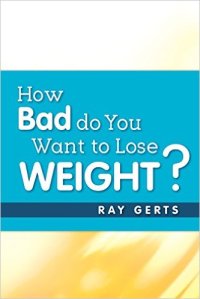Quit smoking. Lay off the junk food. Stop being a couch potato. Don’t stay up too late.
Sounds simple enough: If you have a bad habit, break it.
But “simple” doesn’t necessarily mean “easy.” You’ll need a good strategy.
Swap Bad for Good
It’s important to add good habits to replace your bad ones. Otherwise, the stuff you want to stop doing will probably come back. For instance, you go to Starbuck's in the morning to meet friends, that's not a bad habit, it's what you order that can make it a bad habit. You want to replace the Latte with something that doesn't have calories. Black coffee or tea with non-fat milk. You might not eat breakfast, but Latte's have lots of calories and they're empty calories.
If you smoked, people who quit smoking can replace it with eating too much. Packing healthy snacks can be a good replacement. Bring fruit or nuts with you to work, don't buy junk from the snack machine.
It might be great that you turn off the computer in time to wind down and fall asleep, but if you replace that with looking at your phone or watching TV, that’s probably not going to help. Instead, try meditating, writing in a journal, or reading something on paper. (Light from a screen can keep you awake.) Use a book or something printed on paper to help you fall asleep.
Make sure you enjoy your new healthy habit. If you hate running on a treadmill, chances are you won’t stick with it. If you don’t like broccoli, there’s no point in loading your plate with it because you won’t enjoy it. When you're looking to replace a bad habit make sure this is something you like.
Change one habit at a time. Trying to do too much at once can be overwhelming. It can make you feel like you don’t know where to start, so you don’t start at all. As you meet each goal, try to add another one.
Don’t rush it. Chances are you didn’t develop the bad habit overnight, so give yourself the time to develop the new one. It can take 2 to 3 months for a habit to really take hold.
Track Your Progress
Keep a daily record of the changes you make. If you haven’t met your goals for the week, think about what went wrong, then adjust. If you’ve met your goals, give yourself a little reward. Seeing things add up -- like your work-outs or the days since you’ve had a cigarette -- can motivate and encourage you.
Forgive Yourself
Setbacks are normal. Don’t beat yourself up. Think back to when you first started, look at your daily record, and remind yourself of how far you’ve come. One slip-up doesn’t wipe all of that out. Pick up where you left off.
Breaking a bad habit is about the journey, not the destination.
I wanted to change what I eat and I changed all at once to a fresh food diet. I wasn't going to buy anything anymore that had a label. Everything fresh. Meat,fruit and vegetables, I even started to buy bread from a bakery fresh baked.
I found out that it takes a lot of will power to change everything all at once. For most people, it might be too hard, but it worked for me. After you make the change, you can't look back. I know it might sound easy, because there won't be any calories to count or special diets to follow. That's true, but that also means no canned or bottled drinks except for water. You can't drink anything with calories.
Coffee and tea is fine, but don't add calories. Don't make foods with gravies or sauces. Eat fresh means to eat the food as close to it's natural state as possible. Yes, you can season your food but use spices but no added sugar.
The part that I found the hardest was "eating out". That can be challenging. For the longest time I was eating dry salads with vinegar or lemon juice and a glass of water. You have to be careful ordering salads. Don't order a salad with cheese or meat. You can change a 300 calorie salad into a 800 calorie salad real quick. Chef salads and Taco salads are the worst. Some can be more than 1000 calories.
I know it sounds crazy to only eat salads when you're in a restaurant, but meats in restaurants are usually soared in marinates which is bad for your diet and sometimes bad for your health. Restaurant chains will use marinate to tenderize meat and add flavor and that's when it become a high-calorie dinner. Fish can be a better option, if they will serve it without a sauce or any gravy.
I found that eating "fresh" meant a lot of home-cooked meals and that's the hardest part.





/about/458222005-56aa05a83df78cf772ac0f31.jpg)

/about/102754868-56aa05b95f9b58b7d00081d0.jpg)



